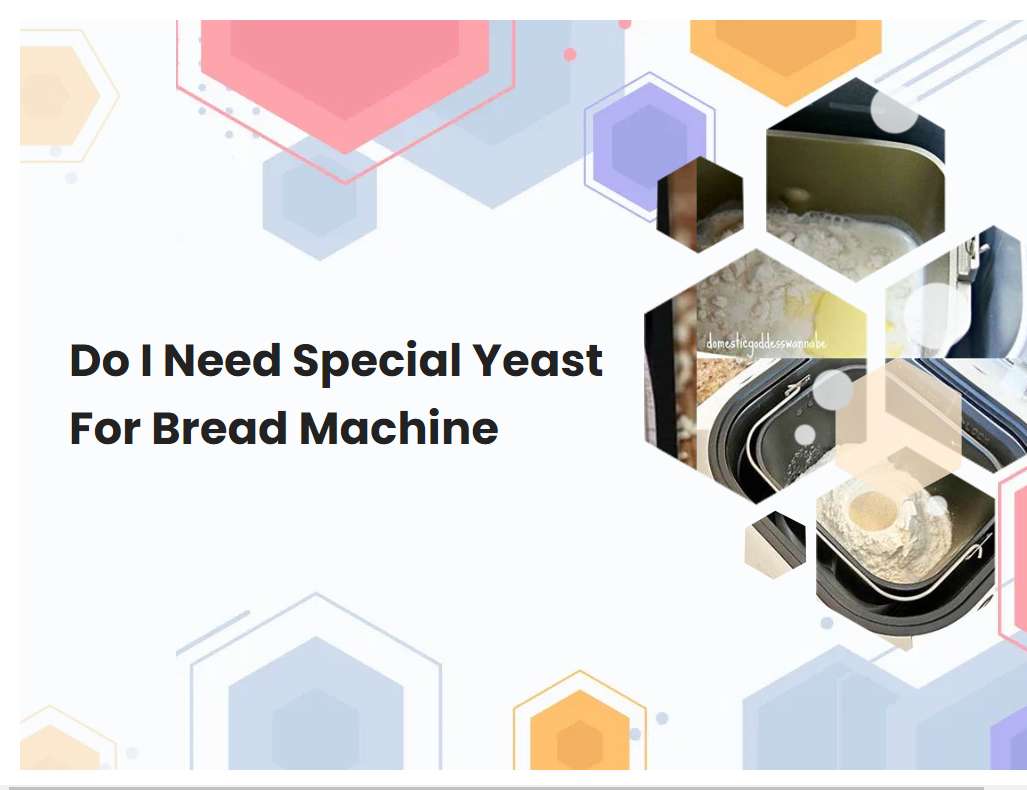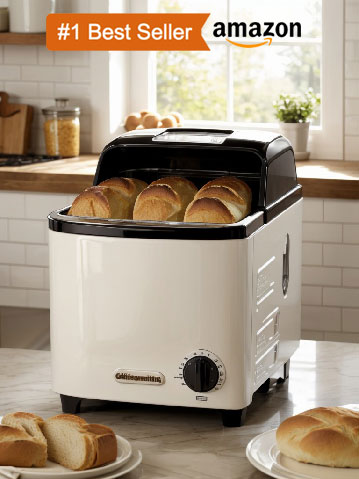Do I Need Special Yeast For Bread Machine
Bread machines are a convenient and user-friendly way to make delicious homemade bread. The yeast is one of the most important ingredients in any bread recipe, and there are a few different options when it comes to choosing the right yeast for your bread machine. Special yeast designed for bread machines is available and can make the process of baking even simpler and more streamlined.

Different bread recipes may call for different types of yeast, so read the recipe carefully to determine which type you need.
When baking bread, it is important to choose the right type of yeast for the recipe. Different recipes may call for different types of yeast, so it is important to read the recipe carefully to determine which type you need. The most commonly used yeast for baking bread are active dry yeast, instant yeast, and fresh yeast.
Active dry yeast is a type of live yeast that is formulated to be used in recipes that require a long rising time. Instant yeast is a newer type of yeast that is more finely milled and can be added directly to dry ingredients, eliminating the need for proofing. Fresh yeast is a type of live yeast that has a shorter shelf life, and requires refrigeration. It also needs to be proofed before using. Different recipes may call for different types of yeast, so make sure to read the recipe carefully and choose the correct type for best results.
Active dry yeast is the most common type for bread machines, although you may also need instant yeast or bread machine yeast.
Active dry yeast is the most common type of yeast used in bread machines. It is sold in small packages, usually about two tablespoons, and is much more shelf-stable than other types of yeast. The active dry yeast needs to be hydrated in warm water before it can be used in a bread machine.
The time it takes for it to activate and become foamy varies, but typically takes between 10-15 minutes. The advantage of active dry yeast is that it can be stored in a cool, dry place and can last up to 12 months. Instant yeast is another type of yeast used in bread machines. It is much finer than active dry yeast and does not need to be hydrated before use. It activates much faster and is more concentrated, so you need less of it when baking. Instant yeast also has a longer shelf-life than active dry yeast, but does not last as long as bread machine yeast. Bread machine yeast is specially formulated for use in bread machines. It is available in either granulated or cake form. It does not need to be hydrated in warm water like active dry yeast and does not activate as quickly as instant yeast. However, it does have a much longer shelf-life than either active dry or instant yeast and can last up to two years if stored properly.
See also: Will Older Bread Machine Make Namaste Gluten Free Bread
Make sure to check the expiration date on the yeast package before using it.
It is important to check the expiration date on a yeast package before using it, as expired yeast can lead to baking failures. Yeast is a living organism and over time, its ability to function diminishes and its effectiveness decreases. The expiration date on the package is an indication of when the yeast should be expected to be at its peak potency.
Generally, yeast can be stored in a cool, dry place for up to two years after its manufacture date, but this can vary depending on the brand. If the expiration date has passed, it is best to discard the package and purchase fresh yeast. Additionally, if the package appears to be damaged or discolored, it is best to discard it as well. Following these steps will ensure that your baked goods turn out as intended and are not a wasted effort.
See also: Coffee Mate Instead Of Milk Powder Bread Machine
Yeast should be stored in a cool, dry place away from direct sunlight.
Yeast is a vital ingredient in baking and should be stored properly in order to ensure it remains fresh and active. Yeast should be kept in a cool, dry place away from direct sunlight. It should not be exposed to extreme temperatures, whether hot or cold, as this can damage the yeast and render it inactive.
A pantry or cupboard is the ideal storage spot for yeast, as long as the temperature is consistent. If possible, store yeast in an airtight container in order to keep out moisture and preserve its freshness. Proper storage of yeast will help ensure that your baked goods turn out perfectly every time.
See also: Show Me Sewwt Rolls Ican Make In Bread Machine
To activate the yeast before using it, dissolve it in warm water that is 110-115°F and let it stand for 5-10 minutes.
Activating yeast prior to baking is an important step in the baking process. To activate yeast, dissolve it in warm water that is 110-115°F and let it stand for 5-10 minutes. The ideal temperature for activating yeast is between 105-115°F, as any water temperature hotter than 115°F will kill the yeast.
During this time, the yeast will begin to dissolve and activate, forming bubbles on the surface of the water and releasing a yeasty aroma. This indicates that the yeast is active and ready to use. Allowing the yeast to rest for 5-10 minutes will ensure that the yeast has had enough time to form bubbles and completely activate. Once the yeast has been activated, it can be added to the dough ingredients to begin the bread-making process.
See also: How Many Kilowatts Per Hour Does A Bread Machine Use
When measuring yeast, use a measuring spoon or scale to ensure accuracy.
When measuring yeast, it is important to ensure accuracy in order to get the desired results in baking. The best way to do this is by using a measuring spoon or scale. A measuring spoon is ideal for measuring small amounts of yeast, as it allows for precise measurements down to the teaspoon.
For larger amounts of yeast, a scale should be used. This will give you a more accurate measurement, allowing you to easily weigh out the desired amount. To ensure the most accurate measurement, the spoon or scale should be calibrated, and the yeast should be lightly spooned into the spoon or onto the scale. Once the desired amount is reached, the yeast should be leveled off before use. Using a measuring spoon or scale to measure yeast is the best way to ensure accuracy and get the desired results in baking.
See also: Gluten Free Corn Bread In Bread Machine
If you are making a large batch of bread, use a larger amount of yeast to ensure a good rise.
When making a large batch of bread, it is important to use an adequate amount of yeast in order to ensure a good rise. Using too little yeast can result in a loaf of bread with a dense texture and a flavor that is lacking in yeastiness. On the other hand, using too much yeast can lead to an overly yeasty flavor and dense texture.
The correct amount of yeast when making a large batch of bread will depend on the recipe, but as a general rule, it is recommended to use at least three times as much yeast as you would use when making a single loaf. For example, if the recipe calls for one teaspoon of yeast for a single loaf, you should use three teaspoons for a large batch. Additionally, when using active dry yeast, it is important to make sure that the yeast is rehydrated in warm water before adding it to the dough. This will help ensure the yeast is active and ready to work, resulting in a light and airy loaf of bread.
Adding sugar or honey to the dough will help to activate the yeast and provide a better rise.
Adding sugar or honey to the dough can be a great way to improve the rise of a loaf of bread. By adding just a small amount of either sweetener to the dough, it will help activate the yeast, which is necessary for the dough to rise. The sugar or honey will also provide extra flavor and sweetness, which can really enhance the taste of the bread.
Additionally, the sugar or honey will help to create a golden brown crust. When adding sugar or honey to the dough, it's important to be careful not to add too much, as it can cause the dough to become overly sweet and can lead to a dense loaf. When used in moderation, however, sugar or honey can be a great way to improve the flavor and texture of your bread.
If you are using a bread machine, follow the manufacturer's instructions for adding yeast.
Using a bread machine to make bread is a great way to get delicious homemade bread without needing to knead and shape the dough. Before you begin, it is important to understand how to add yeast correctly. Depending on your bread machine model, the specific instructions for adding yeast may vary, but the general process is similar.
First, check the instruction manual for your bread machine to ensure that you follow the correct steps and settings for adding yeast. If you are using active dry yeast, you will need to dissolve the yeast in a small amount of warm water (105-110°F) before adding it to the other ingredients. Instant yeast can be added directly into the flour without dissolving it first. Make sure to add the yeast after all of the other ingredients have been added, as it should be the last ingredient added. Once you have added the yeast, close the lid of the bread machine and start the machine according to the instructions in your instruction manual.
When using bread machine yeast, there is no need to activate it with warm water before adding it to the ingredients.
Bread machine yeast is a type of yeast specially made for use in bread machines. It is a type of active dry yeast, which means it is milled into very small granules and then dried. This makes it more stable and longer lasting than other types of yeast, so it can be stored at room temperature.
Since it is already active, bread machine yeast does not need to be activated with warm water before adding it to the ingredients. Instead, it should be mixed directly into the dry ingredients in the bread machine, along with the other wet ingredients. When using bread machine yeast, it is important to follow the instructions for the particular recipe, as some may require a slightly different procedure for best results.





